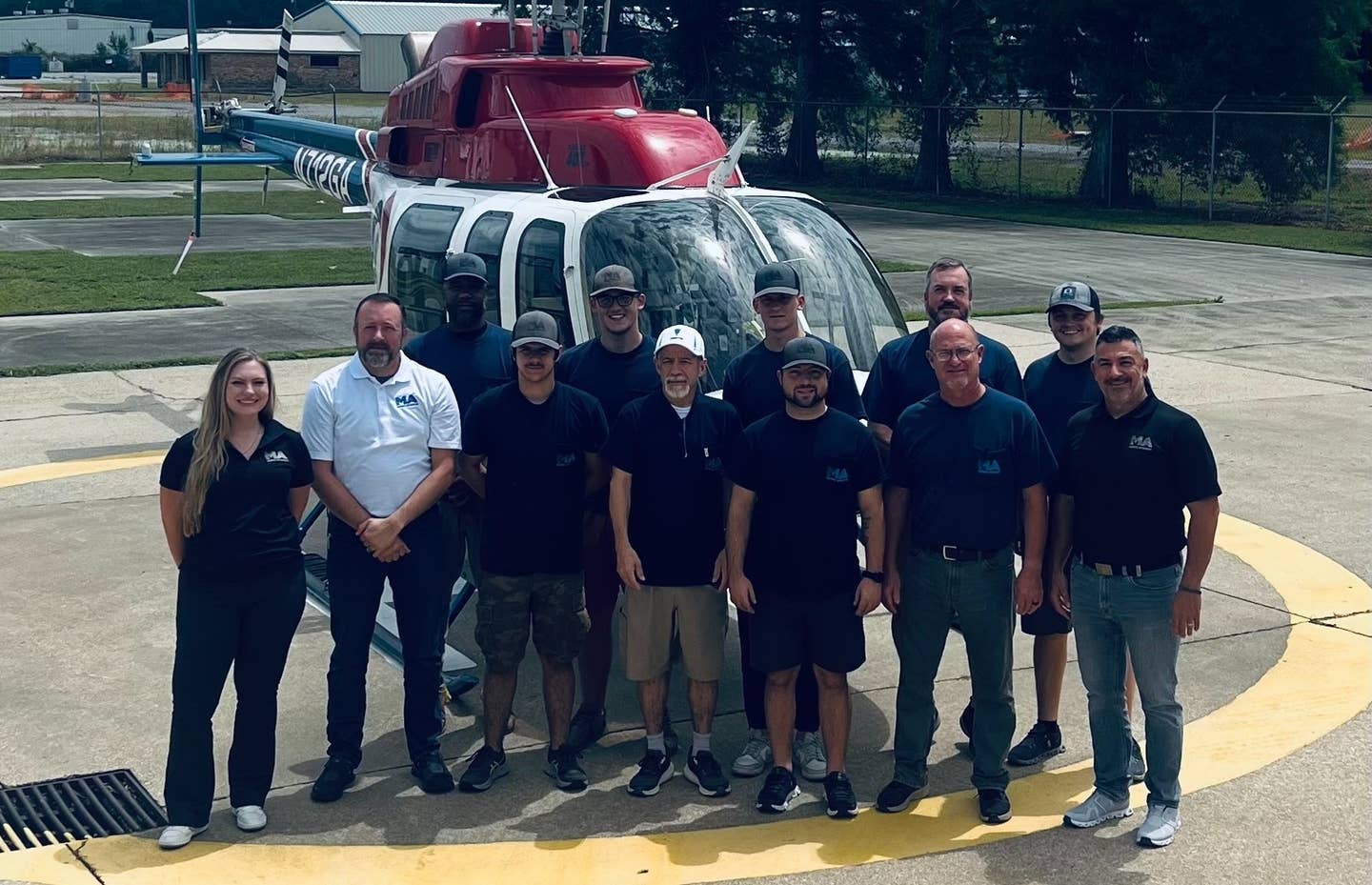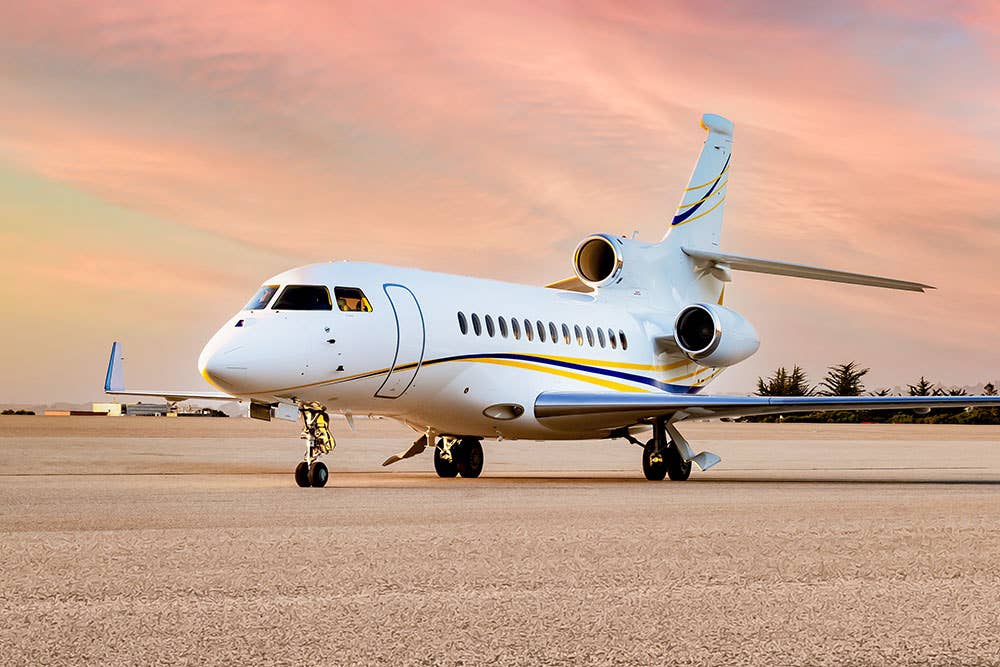
A hiring manager may only have a few seconds to look at your resume, so make sure to pay attention to detail. [File Photo: Adobe Stock]
Whether you’re just starting out in the industry or trying to land that dream job, having a clean, well-organized, and easy-to-read resume is crucially important.
Your resume is often the very first impression that a prospective employer (or admissions officer or scholarship committee) will get of you, and it’s worth putting in the time and effort to make sure their first impression is of an organized, intelligent, and procedure-detail-oriented person.
Even if you’ve already created a resume or CV (“curriculum vitae”) in a non-aviation field, there are some crucial differences to pilot resumes that you should know about.
Below is an example of a typical aviation resume—in this case, mine.
1. Overall Format
Unlike many other industries, the single-page resume is standard in aviation. This will influence many of your choices and may require you to get creative with format, margins, font, and line spacing. Keep in mind that a resume doesn’t need to tell everything about you, just the parts that are most important to the employer or organization you are targeting. The goal is to show enough information to convey your strengths, but not so much that the page is cluttered and difficult to read. It should be visually pleasing and balanced from top to bottom and left to right.
You should use one or two modern, readable fonts (I prefer Avenir Next; other common fonts are Helvetica Neue, Tahoma, Trebuchet MS, and Verdana).
Many industries, particularly those in the creative fields, have gone to more modern resume formats incorporating color, photos, multiple columns, introductory paragraphs, and lists of soft and technical skills or descriptive keywords. However, I would argue that most aviation employers value a conservative mindset over creativity, and your resume should reflect that.
2. Header
Your name should be prominent and sufficiently separated from the rest of the text. This is a nice place to use an elegant font somewhat different from the body of your resume (Here I used Didot; Garamond is another nice choice). Whether you use your middle name, middle initial, or only first and last name is a matter of taste and largely depends on how wordily your parents named you, but you should try to match what you put on your application and cover letter. I prefer to put my contact information in the header; some people put it in a footer.
3. Objective
Many non-aviation fields have ditched the objective in favor of an executive summary, but for us it’s still pretty standard. You should customize your entire resume for every job and employer/organization you target, but particularly this section. Be sure you get the job title and, especially, the potential employer’s name exactly correct! There’s no surer way to the bottom of the pile at Delta Air Lines than claiming you want to work for “Delta Airlines.”
4. Education
This can be placed before or after the flying-specific sections. I would argue that if you have a four-year degree or higher and your prospective employer is known to value education, this section should come first. If you don’t have a degree or if it is superfluous to the job you are applying for, you might list education after work experience.
At a minimum, you should include the highest level of education completed, with institution name and location, course of study, graduation date, and honors and/or GPA (if above 3.0). Any further detail depends on the requirements of the job and how much space you have to fill. For example, if you are just starting out and only have a few FAA certificates, little flight time, and a sparse work history, then you might list both high school and college. If you completed a flight training program at a non-collegiate aviation academy, that would be appropriate to list here. If you have done professional development programs outside of aviation (an IT certification, for example), list them if you have the space or if your education section is otherwise lackluster. If you have multiple entries, list them in reverse chronological order.
If you have any military service, I would put that section either just after education or just before work experience, whichever comes first on your resume. One line listing the military branch and dates of service is sufficient; you will also list specific military jobs and units under work experience.”
5. Pilot Certificates and Ratings
This and the next two sections are the meat of your resume. At a minimum, list the pilot certificate (with category, class, and type ratings) and medical certificate required for the job you are applying for. In this case, where I’m applying to World Domination Airlines, I could eliminate the third and fourth lines if I were short on space; they don’t necessarily care about my Commercial Glider rating or CFII. But if you have the space, put every certificate and rating you’ve earned; they paint the complete picture of a well-rounded pilot. Try to use the verbiage actually printed on your certificates, if you have room. Do not include medical waivers or limitations. Include minor certificates (e.g. FCC Restricted Radiotelephone Operators Permit) only if you need to fill space or if they are explicitly required for your targeted job.”
6. Flight Time
This should be laid out as a table, customized to the requirements of the targeted job; too many fields, and the heart of your resume will be a cluttered mess. Many applications have very detailed flight time grids that will drive you nuts (“Solo Night Cross-Country”); there is no reason to get that granular on your resume as well. If I were pressed for space, World Domination Airlines only really cares about total time, turbine, and turbine PIC (though heavy time might well catch their eye).
7. Employment History
This is where many resumes get bloated. You don’t need to put every job you’ve ever held; that’s what applications are for. In this case I listed “Airline Work Experience” because I had the space for three airlines and even a long-ago internship. Earlier in my career, I titled it “Aviation Work Experience” and included flight schools and Part 135 outfits, and before that it was just “Work Experience,” running all the way back to my high school job at a lumberyard. If pressed for space, call it “Recent Work Experience” and only list your present position and most recent previous job.
For each entry, list company name and location, dates of employment, and a few descriptive bullet points (for flying jobs: position, aircraft flown, type of operation). In sales and creative fields, it’s common to use “power verbs” to brag about all the great stuff you’ve done. Not necessary here; the presumption is that every flight had a successful outcome. Entries should be in reverse chronological order.”
8. Miscellaneous
Space dependent, there are several categories you can add. Some popular ones are:
- Other skills: Tailored to the employer. I happen to know that World Domination Airlines likes their pilots to be tech savvy, so I listed my sweet cyber skills here.
- Volunteer work: Surprisingly important at some employers (Dixie Air Service for one), less so for others. Know your targeted employer.
- Languages: Be careful about overstating your level of fluency, someone at the interview will no doubt speak it as their first language.
- Awards: Community recognition can make you stand out from the crowd.
- Activities/hobbies: I’d be very careful about this one, unless you’re involved in something challenging and interesting that makes you stand out but doesn’t make you sound like a wild card (“Master Glassblower” I’d put on an airline resume, “Regional champion BASE jumper” not so much).
- Availability: Personally, I’ve always enjoyed advertising my willingness to screw over my current employer. Your mileage may vary.
9. Editing and Distribution
I cannot stress this enough: pay absolutely microscopic attention to detail, and get multiple sets of eyeballs on your resume before you give it to any employer you’re trying to woo. Don’t just send it to your aviation friends, send it to your literate friends. Spelling, grammar, and punctuation need to be perfect, and style and formatting need to be consistent. Inspect your resume in varied settings: not just on your word processor, but also in PDF format and on plain printer paper and good resume paper. The above example has several minor mistakes I didn’t catch until I’d printed it (I left them as easter eggs).
When submitting your resume online (whether via email or attached to an application), the best format is PDF, because different versions of word processors sometimes render DOC or DOCX files differently. Word, Pages, and most other word processors have the ability to export in PDF.
There are still quite a few situations that call for an old-fashioned paper resume: job fairs and conventions, interviews, hitting the street on a cold call, or for the really old school potential employer, snail mail.
Do yourself a favor and get some really nice-looking, great-feeling resume paper. I personally like 32 lb. 100 percent cotton in a linen finish. White is a safe color choice; almond or ivory are about as crazy as I’d get for an aviation resume. Good paper runs $20-30 for 100 sheets; FedEx Office will sell you smaller quantities, and can also print copies if you don’t have a high-quality printer.
- RESUME TEMPLATES: Word | Apple Pages

Subscribe to Our Newsletter
Get the latest FLYING stories delivered directly to your inbox






